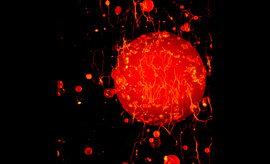Current recommendations for clinical surveillance and genetic testing in rhabdoid tumor predisposition: a report from the SIOPE Host Genome Working Group
AbstractThe rhabdoid tumor (RT) predisposition syndromes 1 and 2 (RTPS1 and 2) are rare genetic conditions rendering young children vulnerable to an increased risk of RT, malignant neoplasms affecting the kidney, miscellaneous soft-part tissues, the liver and the central nervous system (Atypical Teratoid Rhabdoid Tumors, ATRT). Both, RTPS1&2 are due to pathogenic variants (PV) in genes encoding constituents of the BAF chromatin remodeling complex, i.e. SMARCB1 (RTPS1) and SMARCA4 (RTPS2). In contrast to other genetic disorders related to PVs in SMARCB1 and SMARCA4 such as Coffin-Siris Syndrome, RTPS1&2 are characterized by a predominance of truncating PVs, terminating transcription thus explaining a specific cancer risk. The penetrance of RTPS1 early in life is high and associated with a poor survival. However, few unaffected carriers may be encountered. Beyond RT, the tumor spectrum may be larger than initially suspected, and cancer surveillance offered to unaffected carriers (siblings or parents) and long-term survivors of RT is still a matter of discussion. RTPS2 exposes female carriers to an ill-defined risk of small cell carcinoma of the ovaries, hypercalcemic type (SCCOHT), which may appear in prepubertal females. RT surveillance protocols for these rare families have not been established. To address unresolved issues in the care of individuals with RTPS and to propose appropriate surveillance guidelines in childhood, the SIOPe Host Genome working group invited pediatric oncologists and geneticists to contribute to an expert meeting. The current manuscript summarizes conclusions of the panel discussion, including consented statements as well as non-evidence-based proposals for validation in the future.


